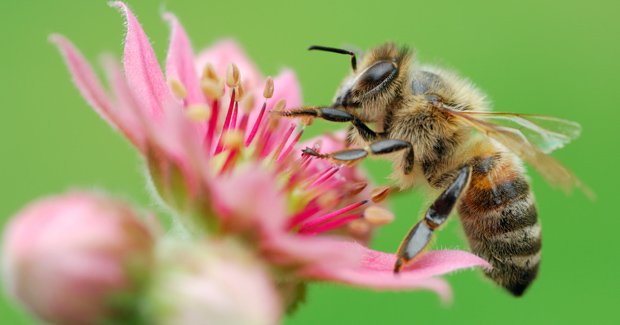Climate change hinders bee pollination

THE DECLINE OF POPULATIONS of bees and other flower-visiting creatures has previously caused concern about pollination, particularly in North America. And now scientists in Canada have revealed a further blow: climate change may be preventing bees from carrying out their vital role by upsetting their life cycles.
Flowering times of mountain lilies in the US appear to be out of sync with their bumblebee pollinators, a new study suggests. As a result, fewer of the plants are being pollinated and bearing fruit, a phenomenon which may only be local, or could be globally widespread.
“Bee numbers may have declined at our research site, but we suspect that
a climate-driven mismatch between the times when flowers open and when
bees emerge from hibernation is a more important factor,” says lead author, biologist
James Thomson, from the University of Toronto in Canada.
There are major implications for farming and food supplies, as one-third of the world’s fruits and vegetables would not exist without the help of bees and other pollinators.
17-year investigation
James conducted a 17-year pollination study of the glacier lily, Erythronium grandiflorum, in the Rocky Mountains of Colorado – one of the longest investigations of its kind ever conducted. He found a progressive decline in pollination over the years, which was most pronounced early in the flowering season.
Three times a year James compared the fruiting rate of flowers that were left to be pollinated naturally, or given extra doses of pollen by hand. “Early in the year, when bumble bee queens are still hibernating, the fruiting rates are especially low,” he says. “This is sobering because it suggests that pollination is vulnerable, even in a relatively pristine environment that is free of pesticides and human disturbance but still subject to climate change.”
James began his research in the late 1980s after buying a remote plot of land and building a log cabin in a meadow full of glacier lilies. The glacier lily’s blooming period lasts about four weeks, typically from May to June. Its principal pollinators are queens of the early-emerging bumble bee species Bombus bifarius and Bombus occidentalis.
Surveys have shown no clear evidence of a decline in bumble bee numbers in the region. James says the pollination deficits he had observed were probably due to a “growing phenological mismatch between the blooming of E. grandiflorum and the emergence of its best pollinators”.
He added that the activity levels of queen bumble bees and the lifespan of flowers may be highly sensitive to air temperatures, sunshine, precipitation and wind. “If these factors are changing, subtle dislocations of bees and flowers seem plausible,” he says. “Further research is needed to see whether the trend continues, and what might be driving it.”
His findings were published in the journal Philosophical Transactions of the Royal Society B: Biological Sciences.

